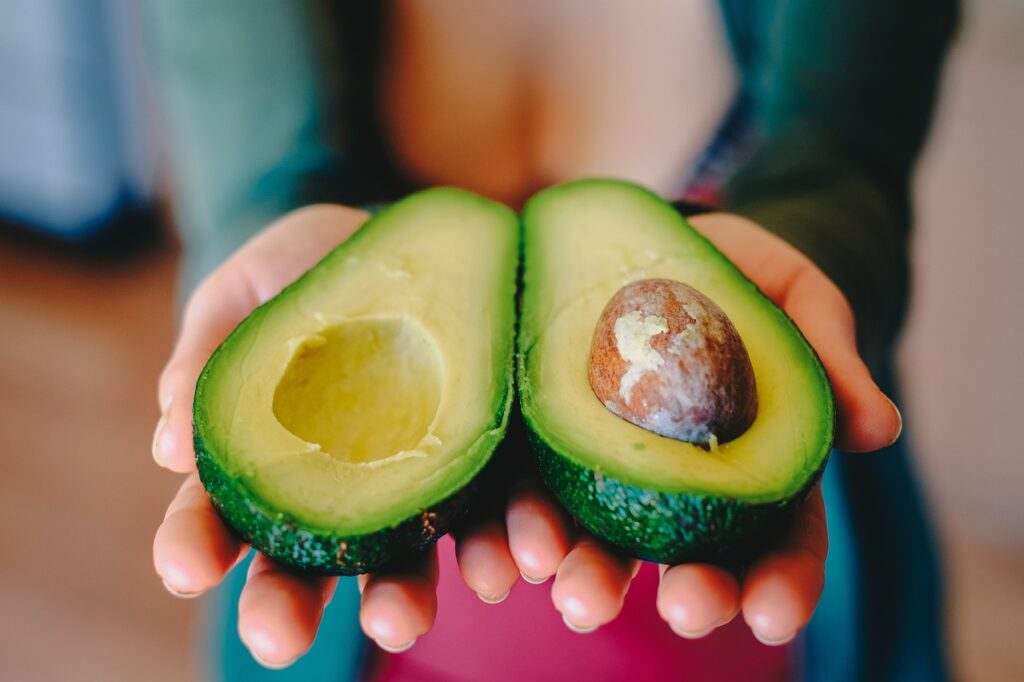Table of Contents
Introduction: Understanding Cholesterol and its Impact on Health
Cholesterol is a type of fat found in the blood that plays a crucial role in several body functions. It serves as an essential component for cell membranes, aids digestion, and helps produce hormones like estrogen and testosterone. However, having too much cholesterol can increase your risk of heart disease.
High cholesterol levels lead to the formation of plaques in arteries that can eventually hinder blood flow to vital organs such as the brain or heart. When these plaques rupture or break apart, they can trigger blood clots which may cause stroke or heart attack.
There are two types of cholesterol – Low-Density Lipoprotein (LDL) also known as “bad” cholesterol and High-Density Lipoprotein (HDL) referred to as “good” cholesterol. The ideal scenario is having low LDL levels combined with high HDL levels.
Maintaining healthy lifestyle habits can help you balance your good and bad cholesterols; making this a key factor in preventing cardiovascular diseases.
In summary:
● Cholesterol is beneficial but excess amounts are harmful ● High LDL increases the risk of developing cardiovascular disease ● Maintaining optimal HDL-to-LDL ratio minimizes health complications
The Science Behind Cholesterol-Lowering Superfoods
If you’re looking for ways to improve your cholesterol levels, incorporating certain foods into your diet can be a smart move. But what exactly makes these “superfoods” so special?
First off, it’s important to know that not all cholesterol is created equal. High-density lipoprotein (HDL) cholesterol is known as the “good” kind because it helps remove low-density lipoprotein (LDL) cholesterol from the bloodstream. LDL, on the other hand, is often referred to as the “bad” kind due to its potential role in leading to plaque buildup in arteries.
So how can superfoods help? Many of them contain compounds like fiber and plant sterols that have been shown to lower LDL cholesterol levels.
Fiber: Foods high in soluble fiber, such as oats and beans, are particularly effective at reducing LDL cholesterol. This type of fiber binds with bile acids in the gut and helps remove them from the body – which means the liver must use more of its stored supply of bile acids to produce new ones. And since one way our bodies make bile acids is by breaking down LDL-cholesterol, this process indirectly leads to lower overall levels.
Plant Sterols: Structurally similar to human cholesterol but unable to be absorbed by our intestines like regular dietary fat does – meaning they block absorption instead – plant sterols are found naturally in many fruits and vegetables or added into products like margarine spreads or yogurts. Consuming 1-3 grams per day has been linked with modest reductions in LDL level especially when combined with a healthy lifestyle.
Beyond their impact on cholesterol levels specifically though some superfoods also offer additional health benefits thanks minor bioactive molecules, like antioxidants and Omega-3 fatty acids.
Combing Superfoods with a Heart-Healthy Diet Plan
While consuming more superfoods is definitely beneficial for cholesterol management – incorporating them into an overall heart-healthy diet can be even more so. This means limiting processed foods which will naturally limit intake of saturated and trans fats, two types of dietary fat that raise LDL levels the most. Other best practices include eating enough healthy protein sources and aiming to add fruits, vegetables, whole grains as well as plant oils high in unsaturated fats while reduce sodium from added salts.
Top 6 Foods to Include in Your Diet to Lower Cholesterol Levels
High cholesterol is a major risk factor for heart disease, stroke, and other chronic illnesses. Fortunately, certain foods can help lower your cholesterol levels naturally.
If you want to improve your heart health through diet, here are the top 6 Cholesterol-Lowering Superfoods you should consider adding to your meals:
1. Avocado
Avocado is rich in monounsaturated fats that have been shown to reduce bad LDL cholesterol while increasing good HDL cholesterol levels in the bloodstream. It also contains dietary fiber which helps eliminate excess bile from the digestive tract and lowers absorption of fat into the body.
2. Oats
Oats contain beta-glucan fibers that form a gel-like substance when it comes in contact with water or liquids in the digestive system. This gel binds with bile acids preventing reabsorption back into circulation thereby lowering total serum cholesterol count significantly over time.
3. Beans & Legumes
Beans like lentils, chickpeas navy beans are high-fiber plant-based proteins that inhibits liver production of low-density lipoprotein (LDL) which has been linked to plaque buildup along arterial walls leading towards cardiovascular disease.
4. Nuts & Seeds
Nuts and seeds such as almonds,walnuts,pistachios etc., areloaded with healthy unsaturated fats,fiber,and magnesium which contributes toward maintaining optimal blood pressure and reduces inflammation throughout the circulatory system.
5.Fatty Fish
Fatty fish varieties such as salmon,mackerel,tuna sardines etc.,contain omega-3 fatty acids EPA & DHA that work wonders in counteracting inflammation and reducing triglyceride levels thus overall improving cardiovascular functions of our body. 6.Berries
Berries like strawberries,blueberries, raspberries etc. are a good source of Polyphenols and anthocyanins which have anti-inflammatory qualities and helps prevent oxidation of LDL cholesterol,thus lowering risk for heart disease.
Incorporating these superfoods into your diet can lead to long-term health benefits that go well beyond just reducing cholesterol levels.
Incorporating These Foods into Your Daily Diet Plan for Optimal Results
Now that we know which foods can help us lower our cholesterol levels, let’s explore how to incorporate them into a daily diet plan.
Breakfast:
- Add oats or oatmeal to your breakfast menu. You can top it with berries, nuts and seeds
- Slice up an avocado as a healthy side dish for your eggs
Lunch:
- A bean salad with tomatoes and cucumber is always a winner at any lunch table. Use olive oil as the dressing option
- A small serving of fatty fish like salmon or tuna in baked patties form add omega-3 fat acids to your diet and works great along with some steamed vegetables on the side
Dinner:
- Baked beans are easy to make ahead of time and warm up when you’re ready for dinner. Add onions, garlic, fresh cilantro & lime juice for more taste
- Fish baked in foil packets makes clean-up easy while keeping everything moist inside is another way of including fatty fish in dinner menus
- Mixing together black beans and quinoa will get you all essential amino acids plus fiber resulting longer satiety period helping blood sugar management too! Note: All dishes mentioned above can be customized according to taste preferences.
- A small serving of nuts and seeds will keep you satiated till your next meal
- Fresh berries like strawberries or blueberries are packed with antioxidants, vitamins and fiber making a great snack option
Snacks:
Incorporating these foods in the diet plan is very easy! Many foods that fit into these categories can substitute unhealthy alternatives like snacks or desserts. Find what works best for you so that healthy eating becomes an enjoyable part of your daily routine!
Other Lifestyle changes that Help with Reducing Cholesterol Levels
If you’re looking to lower your cholesterol, there are many lifestyle changes you can make in addition to incorporating more cholesterol-lowering superfoods into your diet. Here are a few tips:
Exercise Regularly: Maintaining an active lifestyle is essential for heart health. Exercise helps increase levels of HDL (good) cholesterol and can help decrease LDL (bad) cholesterol levels. Aim for at least 30 minutes of moderate exercise most days of the week.
Quit Smoking: Smoking has been linked to high blood pressure, which puts additional strain on your heart and increases the risk of developing heart disease. Quitting smoking may also help improve your HDL-to-LDL ratio, leading to better overall cholesterol levels.
Lose Weight: If you’re overweight or obese, losing weight can be one effective way to improve your lipid profile and reduce the risk of developing heart disease. Losing just 5-10% of body weight can have significant positive effects on blood lipids.
Avoid Trans Fats: Trans fats are unsaturated fats that have been chemically altered through hydrogenation to mimic saturated fat characteristics. They raise LDL (bad) cholesterol while decreasing HDL (good) cholesterol levels – increasing overall risk for cardiovascular problems like clogged arteries, stroke or even death from coronary artery disease.Therefore it’s recommended limiting trans fats intake as much as possible.
We hope these tips prove useful in helping you manage your health! Remember that making small dietary and lifestyle changes now will pay off big later when it comes down to long-term benefits towards maintaining better hearth health!
Conclusion: Making Small Dietary Changes for Long-Term Heart Health Benefits
Lowering cholesterol levels is essential for maintaining heart health, and adding cholesterol-lowering superfoods to your diet can help you achieve that goal. However, it’s important to note that no single food or nutrient can act as a magic bullet in the fight against high cholesterol.
The key to long-term heart health benefits lies in making small dietary changes and committing to them consistently over time. By incorporating foods like avocados, oats, beans & legumes, nuts & seeds, fatty fish, and berries into your daily diet plan along with regular exercise and limiting alcohol intake or quitting smoking (if applicable), you can significantly reduce your risk of developing heart disease.
It may take some time for these lifestyle changes to show a significant impact on lowering cholesterol levels. Still, their effects are long-lasting and far-reaching when done consistently over extended periods.
In conclusion,
incorporating healthy eating habits such as choosing whole grains instead of refined ones; consuming more fruits and vegetables; avoiding saturated fats found in fried foods; switching up protein sources from red meat towards plant-based sources reduces one’s risk of chronic diseases like type 2 diabetes mellitus or cardiovascular disease substantially.
We must champion the adoption of healthier lifestyles while encouraging others on this journey towards living happier lives by reducing risks associated with various illnesses!




